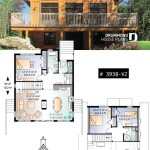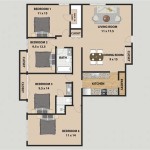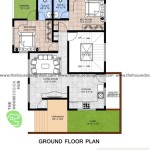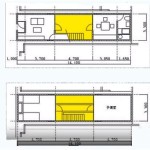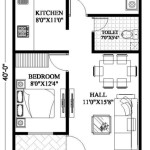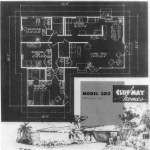Underground House Plans: Essential Aspects to Consider
Underground homes have gained popularity in recent years due to their energy efficiency, unique aesthetics, and protection from severe weather. Planning an underground house requires careful consideration of various aspects to ensure a functional and comfortable living space.
Ventilation and Airflow
Proper ventilation is crucial in underground houses to maintain a healthy indoor environment. Installing mechanical ventilation systems, such as heat recovery ventilators or air-to-air heat exchangers, is essential to provide fresh air and remove moisture and pollutants.
Lighting and Sunlight
Underground homes can lack natural sunlight, so it's important to incorporate ample artificial lighting. Skylights and clerestory windows bring in natural light, while well-designed artificial lighting plans ensure adequate illumination throughout the home.
Waterproofing and Drainage
Underground houses are prone to moisture and water penetration, so meticulous waterproofing is essential. Layers of waterproof membranes, proper drainage systems, and foundation sealing are crucial to prevent water damage.
Structural Stability
Ensuring the structural integrity of an underground house is paramount. The surrounding soil conditions and the type of construction method used must be carefully assessed. Reinforced concrete, steel reinforcement, and proper drainage systems are common measures employed to maintain structural stability.
Energy Efficiency
Underground homes inherently have excellent thermal insulation due to the surrounding soil. However, additional measures like geothermal heating and cooling systems, passive solar design, and airtight construction contribute significantly to energy efficiency.
Access and Emergency Exits
Underground houses require careful planning for access and emergency exits. Multiple entrances and exits are recommended, and they should be accessible and well-lit even in the event of a power outage.
Cost and Maintenance
Building an underground house can be more expensive than traditional above-ground construction due to the specialized materials and techniques involved. However, the energy savings and potential for long-term durability can offset these costs in the long run. Maintenance costs are typically lower than above-ground houses due to the protected environment.
Additional Considerations
When planning an underground house, other factors to consider include:
- Fire safety measures, such as smoke detectors and fire suppression systems
- Soundproofing to minimize noise from outside sources
- Access to utilities, including electricity, water, and gas
- Indoor air quality and radon mitigation
- Impact on the surrounding environment
Consultation with professionals, including architects, engineers, and geotechnical experts, is essential throughout the planning and construction process of an underground house to ensure safety, functionality, and longevity.

Lovely Underground Home Plans 4 House Homes Earth Sheltered

Earth Sheltered Home Plans House Floor And Design

An Underground House Alaska Science Forum Homes Earth Sheltered

Earth Sheltered Plans And Bermed Homes

How To Build An Underground Home The Tiny Life

26 Luxury Hiline Home Plans Underground Homes House Earth Sheltered

Designing Building Solar Underground House Sue Robishaw Steve Schmeck

House Plan 10376 Retro Style With 2139 Sq Ft 3 Bed 2 Bath

Underground House Design Ideas Pictures 69 Sqm Homestyler

Underground House Free Design 3d Floor Plans By Planner 5d

